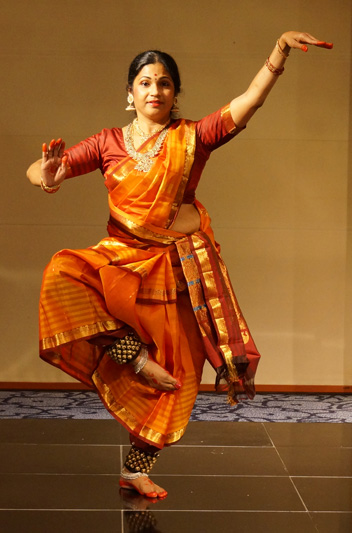This lively figure of a dancing child is Krishna , a beloved Hindu god whose divine nature is revealed at particular moments throughout his life and then, just as quickly, is hidden again.
As a toddler, Krishna and his older brother, Balarama , were quite mischievous. They let loose their parents’ cows, stole butter from the cupboard, and played tricks on one another. Once, Balarama told their mother, Yoshoda, that Krishna had been eating mud, but when Yashoda found Krishna and forced open his mouth, instead of mud, she saw the entire universe twinkling inside — the earth, its mountains and oceans, the sun, the moon, and all the planets and the stars—revealing her son’s divinity. But Krishna cast a veil of illusion, removing all memory of the revelation from his mother’s consciousness.
There are many such stories about the young Krishna. In another, he and his friends find a herd of cattle lying unconscious along the banks of the Yamuna River, which had been polluted by the venom of the giant serpent Kaliya . The venom was so poisonous that it had killed the nearby trees and grass; its fumes even scorched the feathers of birds flying overhead. From the height of a nearby tree, Krishna jumped into the river and was quickly ensnared in the coils of the mighty serpent. A battle raged in the river and Krishna, taking his full form, freed himself from the serpent’s clutches and subdued but did not kill him. He rose out of the water victorious, dancing upon the giant hood of the snake, revealing his true identity as god. Krishna does not kill Kaliya, but shows compassion by simply banishing Kaliya to the ocean. It is, after all, in a snake’s nature to be poisonous.
This famous scene is recounted in the tenth book of the Bhagavata Purana, a collection of the stories of the life of Krishna:
“Laying hold of the middle hood of Kaliya with both his hands, he bent down and set his foot upon it, and danced in triumph… Trampled upon by his feet as they changed position in dance, the snake fainted, and vomited forth much blood.”
This bronze sculpture captures the dancing Krishna in a moment of control, balance, and grace, reminding viewers not only his victory over the serpent, but also of his divinity and his compassion.
For Hindus, dance is one way in which a god’s divine nature is revealed, but it is also a form of worship, one of many expressions of faith that take place at Hindu temples and festivals. Music and dance are among the “sixteen hospitalities,” all designed to be pleasing to the senses, that are offered to a Hindu deity, who is revered as an honored guest in the temple.



